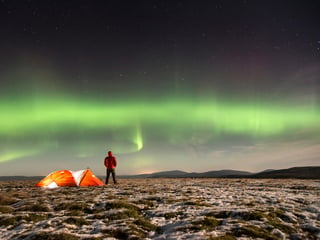Geminids meteor shower 2020: when the shooting star display peaks in December - and how to see it from the UK
There’s a treat in store for budding astronomers in December: the Geminids meteor shower, considered by many to be the most consistent and active annual showers.
Here is everything you need to know about it.


What are the Geminids?
Unlike most meteor showers, the Geminids do not originate from the dust trail of a comet.
Advertisement
Hide AdAdvertisement
Hide AdInstead, the shower takes place when our planet passes through the debris trail of the asteroid ‘3200 Phaethon’. This means the meteors have a more rocky composition, making them slightly easier to observe in comparison to others.
They are so-called because they appear to radiate from the constellation of Gemini, although they can appear almost anywhere in the night sky.
They appear as streaks of light as the small particles – some just the size of a grain of sand – enter the Earth’s atmosphere at 130,000mph.
The meteors travel at a medium speed in relation to other showers, at about 22 miles per second, making them fairly easy to spot.
When can I see them?
The meteor shower actually takes place across about two weeks, from 4 to 17 December.
But this year’s peak came in the early hours of Monday 14 December. That’s when you’ll really want to cross your fingers for clear skies, though the nights either side of that date should still be full of shooting stars.
The Geminids are thought to be intensifying every year, and recent showers have seen 120–160 meteors per hour.
Night owls will have a better chance, with optimal conditions coming between 2 and 3am, but meteors should be visible as soon as it gets dark enough.
What do I need to see them?
Advertisement
Hide AdAdvertisement
Hide AdAll of the major meteor showers can be seen with the naked eye, so there is no need for any sort of specialist equipment. The darker the sky is in your area, the better chance you’ll have at spotting them.
You will need to wrap up warm if you intend to venture out into the cold night though, and with December skies often unsettled, it would be advisable to keep the waterproofs handy.
Astronomers also advise you give yourself around an hour of observing time as the meteors can appear in spurts and are interspersed with lulls.
When is the next meteor shower?
If you miss the Geminids, you won’t have too long to wait until the next shower.
The Ursids meteor shower, the final one of the year, takes place following the winter solstice from 22 to 23 December.
Derived from the name Ursa Minor, the Ursids will appear to come from the constellation colloquially known as the Little Bear.
Unlike the Geminid Meteor Shower, Ursids might be a bit more difficult to see, but should still be visible with the naked eye when they do appear.

